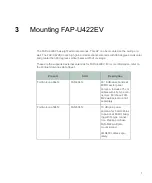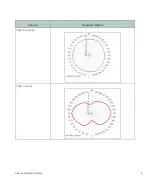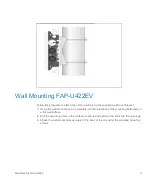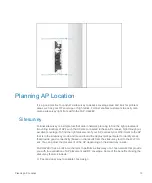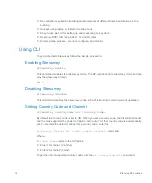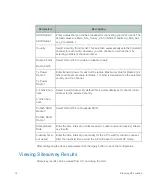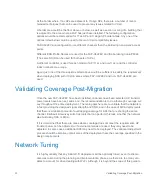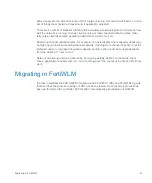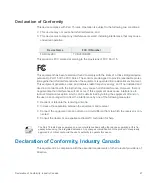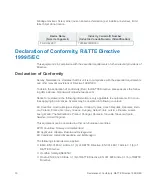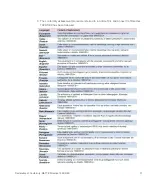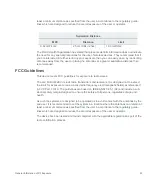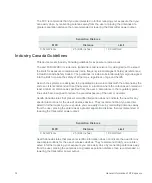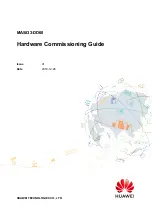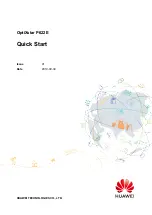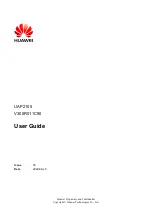
About AP Location
20
AP Density
A good rule of thumb when determining the optimal 11n AP density, from the perspective of a
station, is that a station, no matter where it is located, should be able to hear from 2 to 3 APs.
This recommendation would still hold true for 11ac networks if the design called for approxi-
mately -65 dBm signal strength or greater everywhere; however, in order to support the high-
est data rates available in 11ac, higher AP densities will very likely be required. Higher AP
densities will allow a client to hear more APs. Therefore, the recommendation for 11ac net-
works optimized for peak 11ac client performance is that clients should be able to hear from 3-
5 APs.
Another consideration is that supporting 1024-QAM through a wall or some other signal atten-
uating obstruction is challenging, and therefore if you intend to optimize your network for 11ac
performance, the recommendation is to put 11ac APs within line of sight of the intended cover-
age areas. Assuming line of site, 1024-QAM rates are achievable up to distances between 25
and 30 feet.
AP Transmit Power
With higher AP densities, there will likely be a need to reduce AP transmit power to lessen the
negative effects of co-channel interference (CCI) and adjacent channel interference (ACI).
This is true for high-AP-density Single Channel Architecture (SCA) networks as well as Multi
Channel Architecture (MCA) networks.
2.4 GHz vs. 5 GHz Signal Strength
Thus far, all of the discussions regarding signal strength and AP density have been focused
on 11ac radios. As was already mentioned, performing one-for-one AP replacements is a valid
approach if the network design requirements for signal strength are roughly the same as they
were for the existing network (e.g., -65 dBm or >). If this is the case, the 2.4 GHz network cov-
erage and signal strength will be comparable to what existed prior to performing the one-for-
one AP swap to 11ac APs. If, however, higher AP densities are required to meet higher signal
strength requirements (e.g., -52 dBm or >), then there is a strong likelihood that the new net-
work will be over-provisioned in the 2.4 GHz band. If this is the case, the recommendation is to
provision some of the 2.4 GHz radios as full-time spectrum sensors, and/or configure some of
the 2.4 GHz radios to 5 GHz radios and enable channel layer load balancing across the 11ac
channel layers for high client density areas. It should be mentioned that certain restrictions
apply with channel layer load balancing.


